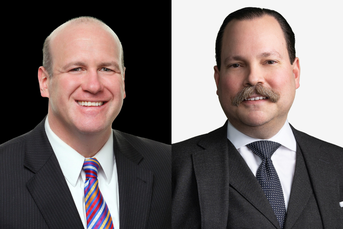Cuba’s move toward capitalism may accelerate
My trip to the island nation produced some memorable insights into the country's future.
During a trip to Cuba earlier this year, I visited Jay-Z and Beyonce’s favorite paladar in Havana.
A paladar is a restaurant in a private residence and owned by the proprietor. The meal our group enjoyed was at La Guarida, in a building that dates to about 1900. We had a similar experience elsewhere in town a few days later, on the balcony of a condo unit overlooking the ocean.
Those evenings provided insight into the slow transformation of the island’s economy from its socialist past to something that approaches capitalism in the future. It’s an evolution that it likely to be accelerated by the opening of U.S. diplomatic relations announced by President Barack Obama on Wednesday.
Our excursion involved 23 people who traveled to Cuba as part of a people-to-people exchange arranged by George Mason University and planned by Friendly Planet Travel. We were among the 100,000 or so Americans who go to Cuba each year through the program, a number that’s likely to increase under the new relationship between the two countries.
The next few waves of Americans to visit Cuba will see a country in transition.
For instance, they may visit, as we did, organic farms. One of them, tucked between housing projects in a Havana neighborhood, pays its workers based on the amount of crops they each raise, giving them an incentive to be more productive.
Another, Coincidencia Farm, outside Havana, grows indigenous crops and also serves as a studio for sculptors and other artists. It sells both its produce and its art.
Even the cigar factories in Havana contain a capitalistic element.
Cuba’s signature product is manufactured with much care and precision by rows of workers who cut and roll the tobacco. They produce tens of thousands of cigars daily with a personal touch. They also are paid by the number of cigars they produce: The more efficient they are, the more money they make.
The country is trying to improve its trade capacity. During one of our outings, we saw construction on a huge port and other signs Cuba is making efforts to bolster its infrastructure.
Our savvy guide, a 30-year-old University of Havana graduate, provided the group was with insights into the culture and politics. He regaled us with “tobacco stories,” discussions Cubans usually have while savoring cigars.
For instance, he explained why the facades of so many building in Havana are worn, even though the apartments within them are inviting — as we saw at the paladares. Under Cuban law, the government owns the buildings, while the units are privately owned. There’s no incentive to keep the outside looking good.
He also illuminated Cuba’s inefficient automobile market. Everywhere we looked, we saw vintage U.S. cars (e.g., 1957 Chevys) used as Cubans’ primary means of transportation. Imported cars can cost $60,000 or more — even if they’re midmarket in the rest of the world.
Those with a car are lucky, as the country has no public transportation system to speak of. We passed dozens of Cubans hitchhiking because bus service is so poor.
Although the U.S. embargo hasn’t been lifted — and can’t be without congressional approval — I would be nervous if I were a resort owner in Florida. Cuba will be giving them stiff competition for tourists, if the magnificent beach at Varadero is any indication.
An added benefit of driving to Varadero from Havana is that you go right by the house where Elian Gonzalez now lives, in the village where he grew up.
Cuba’s evolution will be gradual because the revolution is still ingrained. The Ministry of Defense controls the vast majority of the economy, while posters of Fidel Castro and Che Guevara dot the landscape, from a billboard at the airport to the walls of ration stores in Havana.
For me, the best part of the trip was soaking in the Ernest Hemingway aura. We visited his home, Finca Vigia, on the outskirts of Havana, as well as Cojimar, the fishing village where he set “The Old Man and the Sea,” and the Floridita, his favorite Havana bar.
Seeing the Buena Vista Social Club perform at Café Taberna in Old Havana was a close second as my favorite highlight. I still can’t get “Guantanamera” out of my head.
I’m certain Cubans were as surprised as Americans by the restoration of diplomatic relations this week.
On my trip, I knew just enough Spanish to tell one inquisitive habanero, “Somos Americanos.” He looked puzzled and asked “Los Estados Unidos”? I confirmed we were from the United States, which produced wide eyes, a big smile and ensured a few more minutes of conversation in broken Spanish and English.
Learn more about reprints and licensing for this article.








